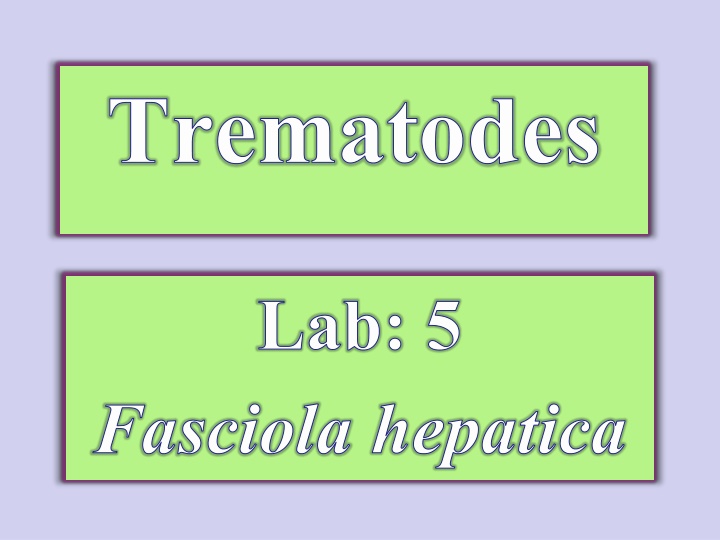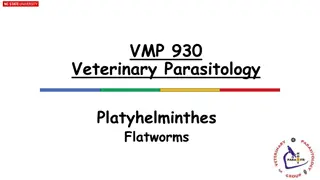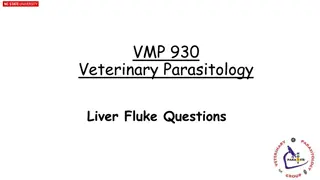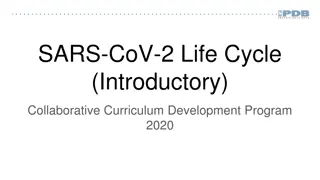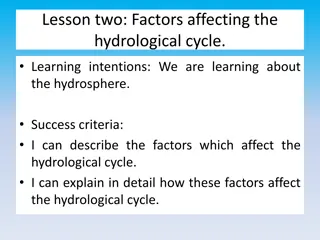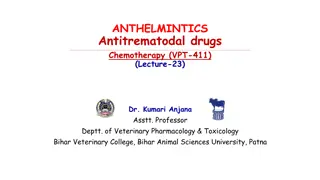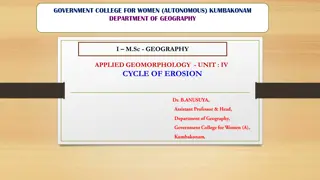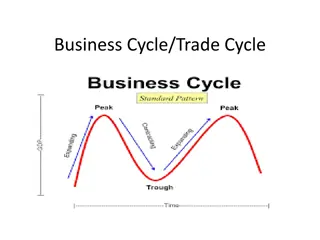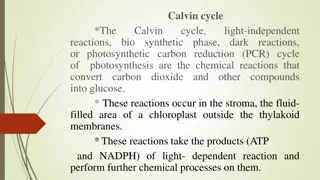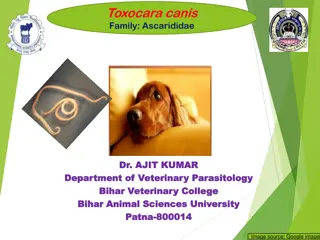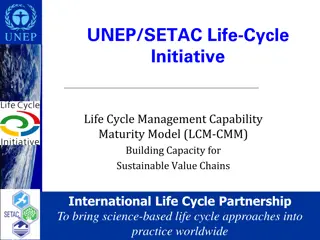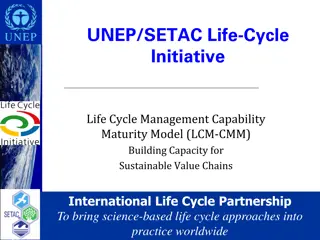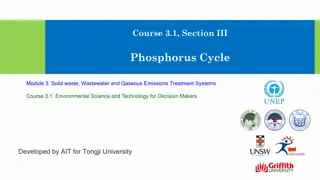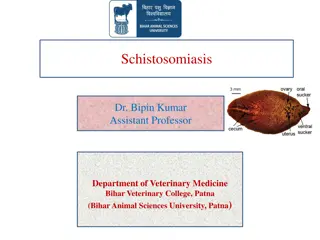Overview of Fasciola hepatica Life Cycle
Explore the life cycle of Fasciola hepatica, a parasitic trematode infecting humans and other vertebrates. Learn about its various stages including adult worms, eggs, miracidium, cercaria, and metacercaria. Understand the intricate reproductive processes involving both sexual and asexual reproduction in appropriate intermediate hosts like snails. Dive into the detailed descriptions and images showcasing the morphology and characteristics of each stage in the life cycle of Fasciola hepatica.
Download Presentation

Please find below an Image/Link to download the presentation.
The content on the website is provided AS IS for your information and personal use only. It may not be sold, licensed, or shared on other websites without obtaining consent from the author.If you encounter any issues during the download, it is possible that the publisher has removed the file from their server.
You are allowed to download the files provided on this website for personal or commercial use, subject to the condition that they are used lawfully. All files are the property of their respective owners.
The content on the website is provided AS IS for your information and personal use only. It may not be sold, licensed, or shared on other websites without obtaining consent from the author.
E N D
Presentation Transcript
Trematodes Lab: 5 Fasciola hepatica
Adult worm in human & other vertiberates (sexual reproduction) Schistosoma Eggs in fresh water (3-7 weeks) Metacercaria (other trematodes) Miracidium (swimming free in water ) Cercaria free in fresh water Sporocyst (soft tissue of the aproprate intermediat host"snail (asexual reproduction) 1st & 2nd generation of Redia (snail)
Fasciola hepatica A. Adult: large and broadly- flattened, measuring up to 30 mm long and 15 mm wide. The anterior end is cone-shaped. Extensive branching of: intestinal ceca, testes and vitelline follicles.
Fasciola hepatica A: Adult Carmine s. Fasciola hepatica Adult 20 30 mm L. X 8 13 mm B, ( grey brown )
Fasciola hepatica B-Ovum Large , Single celled Unembryonated with operculum
Fasciola hepatica C-Miracidium Ciliated, Swimming in water Many celled.
Fasciola hepatica D-Redia Sac - like structure with germ cells, Clusters of germ cells differentiate into daughter redia or cercaria
Fasciola hepatica E. Cercaria: Anterior trunk Posterior tail, Leaving snail to swim in water.
Fasciola hepatica F. Metacercaria: Globose structures Encysted on aquatic vegetation.
